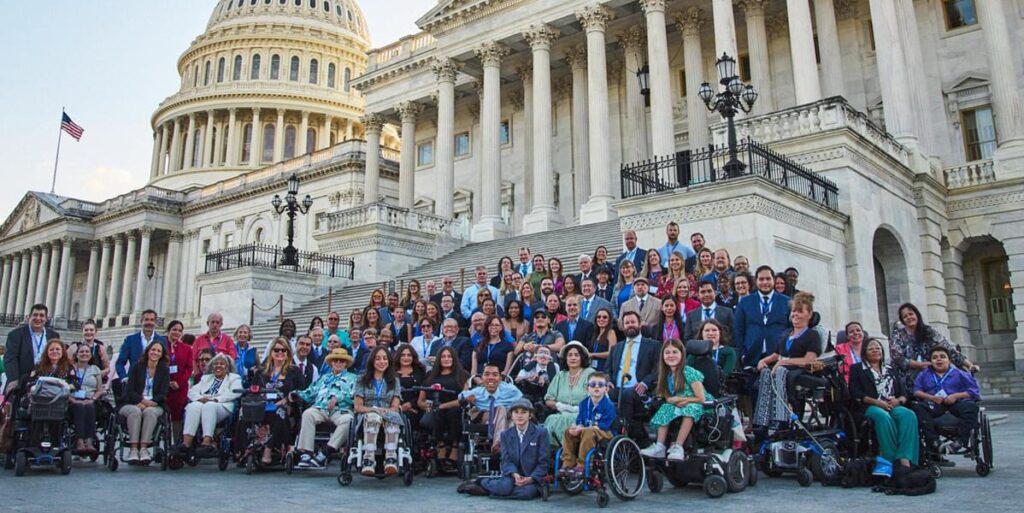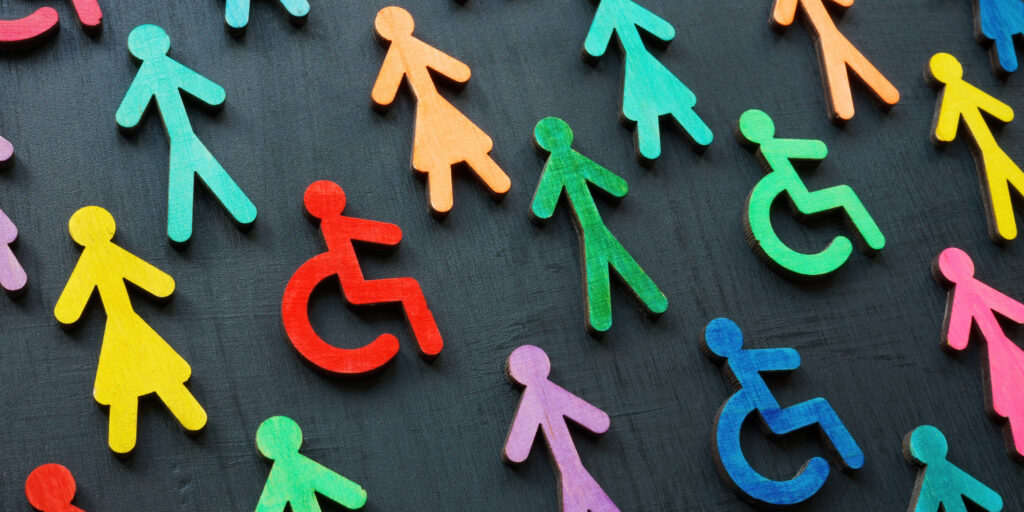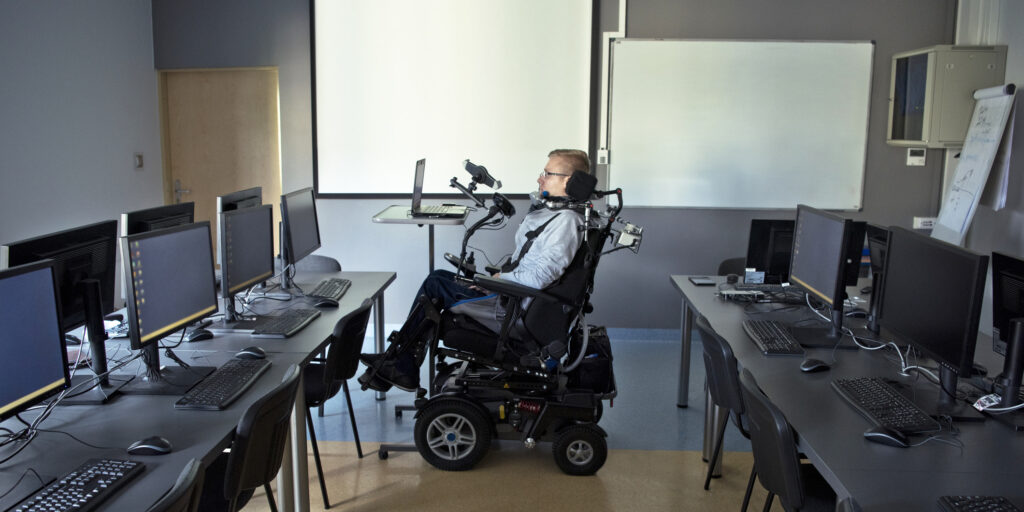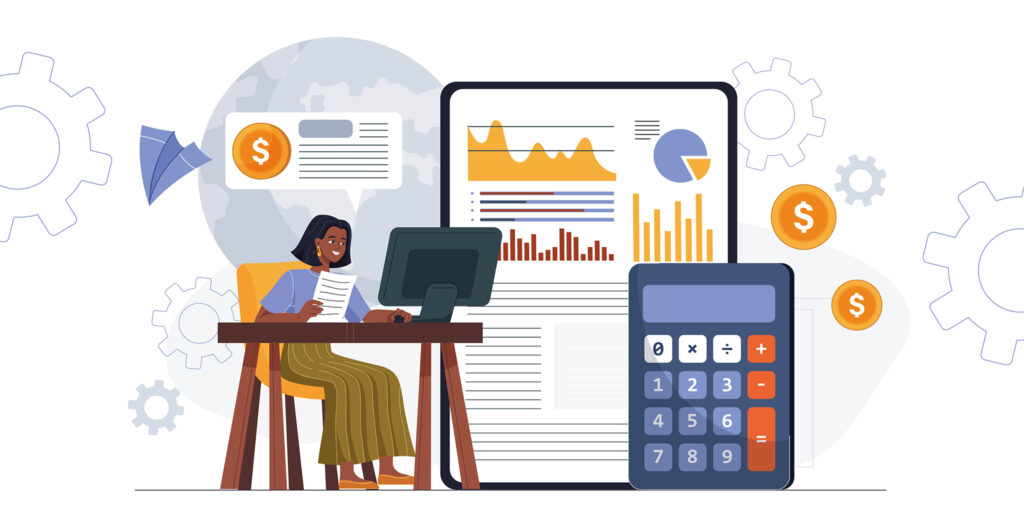
New Year, New Financial Plan: Tips to Get Your Budget Back On Track
By Maggie Callahan | Friday, November 14, 2025
For many families living with neuromuscular diseases, balancing health and disability-related expenses with rising household costs can feel like an impossible feat.

Jody Ellis
Fortunately, the new year is the perfect time to reassess your financial goals and start with a fresh plan. Here, MDA community members and experts offer their tips to avoid debt, shop smarter, and plan for a new year filled with less stress and more independence.
1. Create your budgeting plan
“Identify how much money is coming in and from what sources, whether it be benefits or earned income, as well as your monthly, quarterly, and annual expenses,” says Jody Ellis, Director of the ABLE National Resource Center, managed by National Disability Institute. “Once you know your financial situation, you can begin to identify some potential action steps.”

Tina Vassar
Tina Vassar of North Carolina, who lives with myasthenia gravis (MG), takes this approach. In her budget, she includes income and expenses like insurance premiums, travel, gifts, clothing, food, and a “nest egg” for emergencies. “If you find a deficit, look at ways you can reduce the budget monthly,” she says.
Creating a monthly spreadsheet to track expenses or using a personal budgeting app can make it easier to monitor and follow your spending plan.
2. Open an ABLE account

Vanessa O’Connell
Achieving a Better Life Experience (ABLE) accounts are savings and investment accounts designed specifically for people with disabilities.
“What makes an ABLE account so special is that funds are generally not counted as assets for public benefit programs, such as Medicaid or Supplemental Security Income (SSI), and the investment growth is tax-free,” Jody says.
The 2025 annual contribution limit is $19,000, allowing users to have access to funds well beyond the Medicaid asset limit of $2,000. Funds can be used for expenses like housing, healthcare, education, and transportation.
Currently, a person is eligible for an ABLE account if their disability began before the age of 26. However, on Jan. 1, 2026, eligibility will expand to anyone whose disability began before age 46. This will expand access to 6 million more Americans.
3. Save on essentials

Allyson Pack-Adair
Rising costs can make it seem difficult to save on necessities like food. Vanessa O’Connell of Florida, who lives with Pompe disease, finds her local farmers’ market to be an affordable option. “It provides fresh fruit and vegetables quite reasonably priced,” she says. “It’s an organic, local farm, so the inventory changes with the season.”
While some farmers’ markets have a reputation for being expensive, there are ways to save, such as comparison shopping between vendors for the best prices or visiting at the end of the day for deals on food they need to sell. Many farmers’ markets also accept the Supplemental Nutrition Assistance Program (SNAP).
The DIY approach can also save you money. “I hand-make my own self-care items and plant produce in my garden,” says Allyson Pack-Adair of Arizona, who lives with mitochondrial myopathy.
4. Curb impulse buying

Sophia Dipasupil
Sophia Dipasupil of Virginia, who lives with juvenile dermatomyositis, knows to stop shopping before buyer’s remorse sets in. “When I see something I want but maybe don’t need, I put it down and walk away. If I still want it after a while, I will go back and buy it,” she says. “Most of the time, I don’t end up buying the item.”
Jose Flores of Florida, who lives with spinal muscular atrophy (SMA), follows this simple rule: “Take a 48- to 72-hour pause before any nonessential buy. Most ‘wants’ fade; savings don’t,” he says.
Tina suggests making a shopping list and sticking to it, whether online or in person.
5. Research big purchases

Jose Flores
Medical equipment, mobility aids, and home modifications can be expensive. Before making one of these purchases, find out if they could be covered through your healthcare benefits or a state or community agency.
Lyza Weisman, a law student from Colorado living with SMA, says her $126,000 accessible van modifications were funded through her state’s vocational rehabilitation program. These programs are designed to help people with disabilities find and retain jobs and can provide assistance for a variety of expenses, such as education and training, assistive technology, home and vehicle modifications, and professional coaching.
For other big purchases, consider refurbished options or shop around for deals. Blythe Collins from Michigan, who lives with limb-girdle muscular dystrophy (LGMD), shares that her dad bought her a travel electric wheelchair on Amazon Prime Day for 30% off.
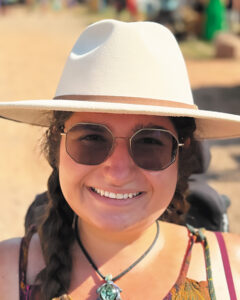
Lyza Weisman
6. Trim your bills
Monthly bills can be just as draining as big-ticket items, but many can be reduced with a little effort. Tina suggests contacting phone and internet providers to negotiate a lower rate. “Check for subscriptions you may have forgotten about or don’t use and cancel them,” she adds.
To address healthcare costs, comparing pharmacy prices is advantageous. Tina also recommends checking with insurance providers and your local government to see if they offer reduced rates for disabilities for insurance and taxes. You can also contact healthcare providers’ billing offices to ask if they have financial assistance programs you might qualify for.

Blythe Collins
7. Avoid or reduce debt
Staying in the black is one of the best long-term ways to save money. Jose has developed a system around his credit card use. “I use credit cards like charge cards, and pay them in full every month,” he says.
If you need help reducing existing debt, resources like National Disability Institute’s Financial Resilience Center can help.
Maggie Callahan is a frequent contributor to Quest Media.
Next Steps and Useful Resources
- Read up on tips to build and protect your savings in The Smart Way to Use Savings Accounts.
- MDA’s Durable Medical Equipment Assistance program and resources
- Financial education and planning are the keys to taking charge of your financial future.
- Stay up to date on Quest content! Subscribe to Quest Magazine and Newsletter.
TAGS: Equipment and Assistive Devices, Finance, Thrive 365
TYPE: Featured Article
Disclaimer: No content on this site should ever be used as a substitute for direct medical advice from your doctor or other qualified clinician.


